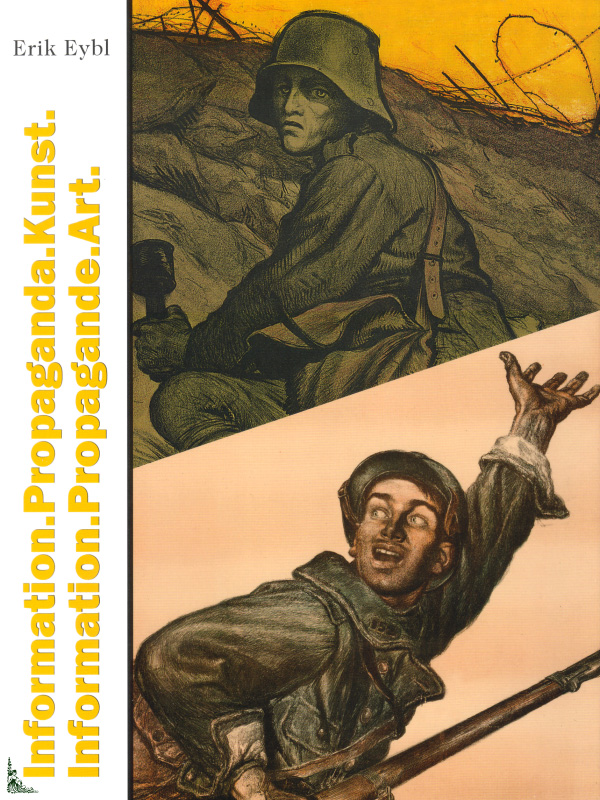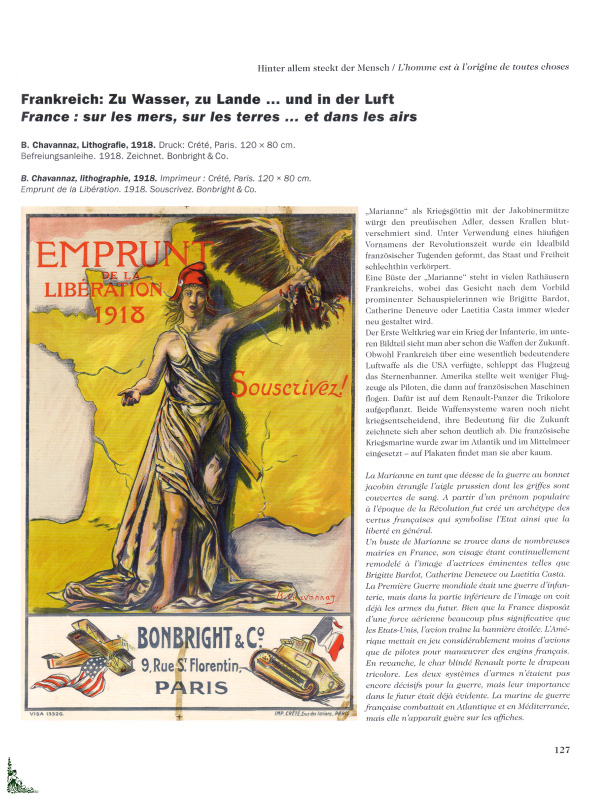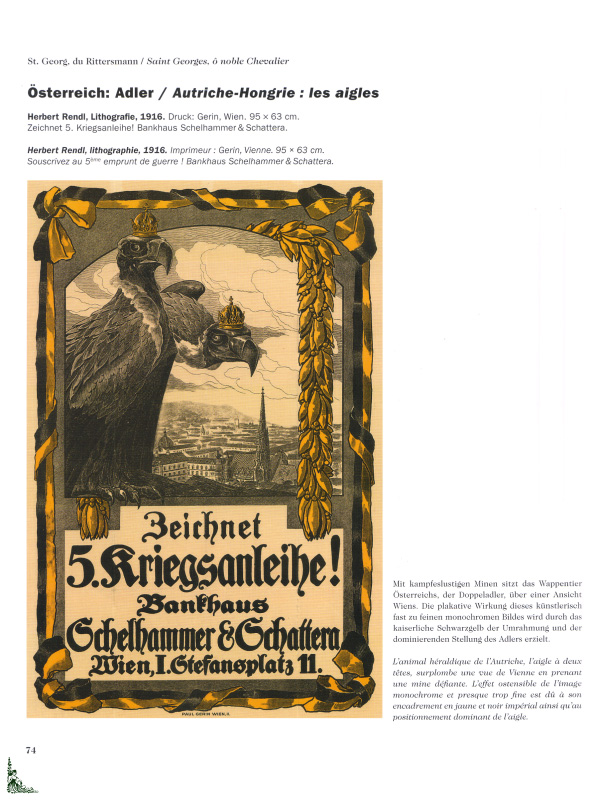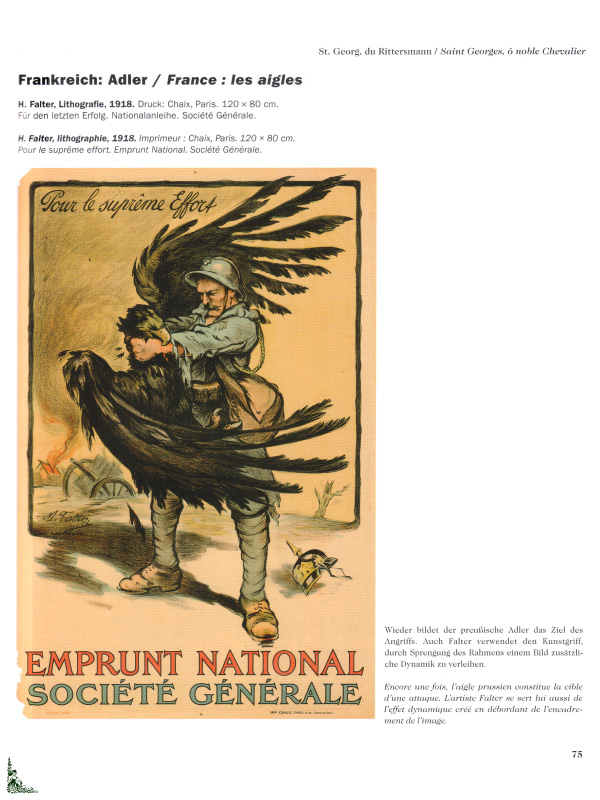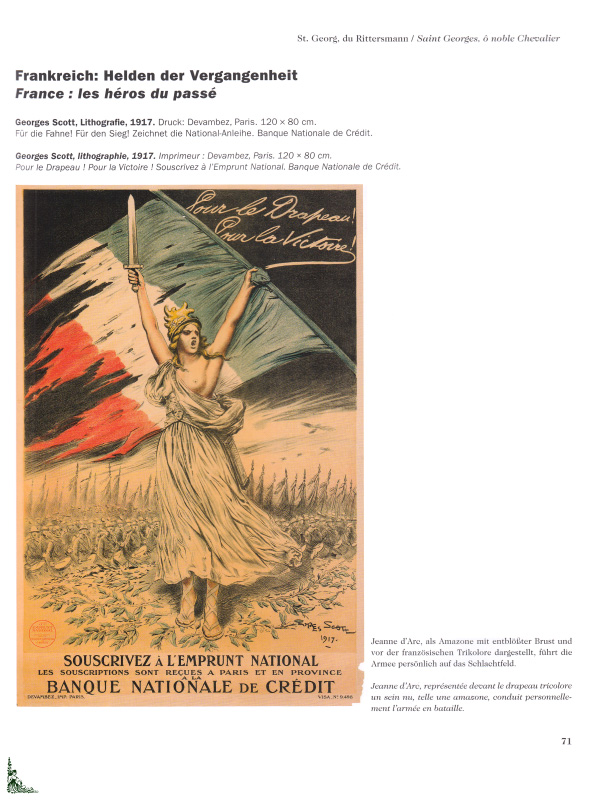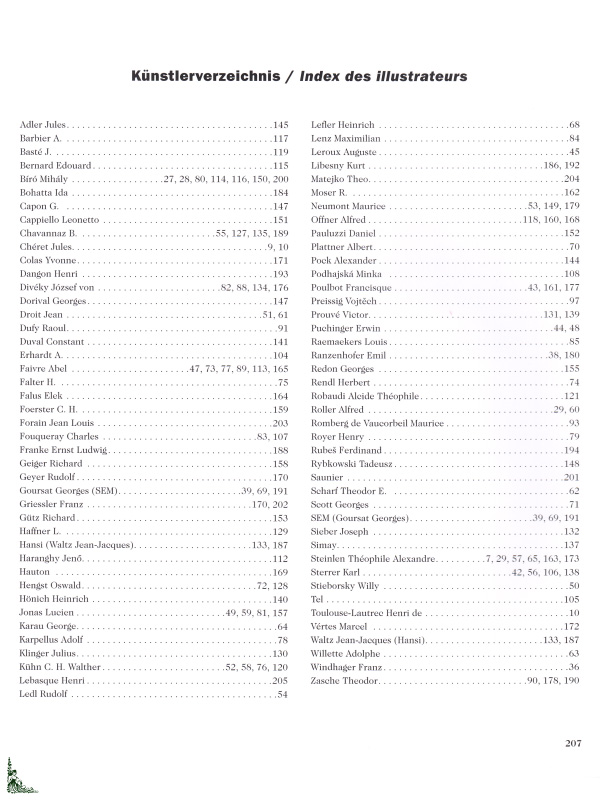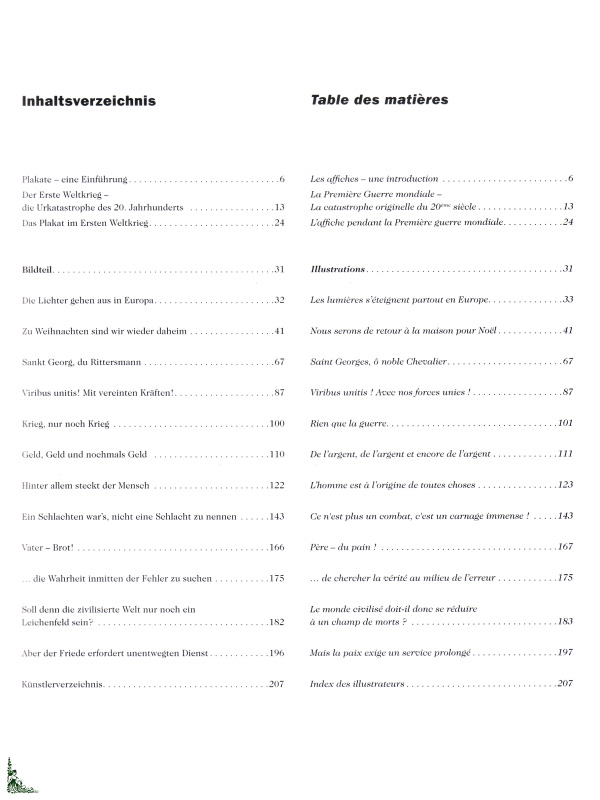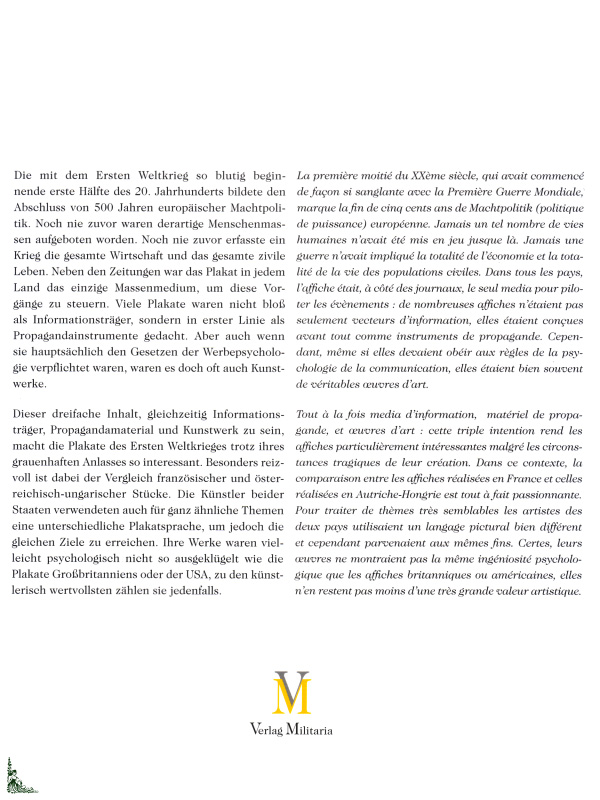Information. Propaganda. Kunst.
Informazioni sul libro
| Autore : | Erik Eybl |
| Editore : | Verlag Militaria (2010) |
| Legatura : | Hardcover w/jacket (208 full color pages) 10 inches x 11-½ inches |
| Le lingue : | French/German |
| ISBN : | 978-3-902526-39-7 |
| EAN : | 9783902526397 |
Descrizione
Information. Propaganda. Kunst., by E. Eybl, Ed. Verlag Militaria, 10 inches x 11-½ inches ( 25 cm x 29.5 cm ), hardcover book with 208 full color pages - French/German edition
This hardcover book with 208 full color pages with more than 200 illustrations presents posters of the Great War, those made in France as those made in Austria-Hungary.
The first half of the 20th century, which had begun so bloodily with the First World War, marks the end of five hundred years of European "Machtpolitik" (power politics). Never before so many lives had been involved. Never before has a war involved the entire economy and the whole of life of civilians.
In all countries, poster was, next to newspapers, the only media to control the events: Many posters were not only information channels, they were primarily designed as propaganda tools. But even if they had to obey the laws of psychology of communication, they were often real works of art.
At the same time media information, propaganda, and works of art: this triple intention makes these posters particularly interesting despite the tragic circumstances of their creation. In this context, the comparison of the posters made in France and those made in Austria-Hungary is quite interesting. To deal with similar themes, the artists of the two countries used a very different pictorial language and still reached the same purpose. Certainly, their work did not show the same psychological ingenuity that British or American posters, they are nevertheless of great artistic value.
Contents:
- Posters - an introduction
- World War I - The original catastrophe of the 20th century
- The poster during World War I
- Index of the illustrators
The texts in French and in German are written by Erik Eybl.
 Description française
Description française
Information. Propagande. Art.
Détails du livre
| Auteur : | Erik Eybl |
| Éditeur : | Verlag Militaria (2010) |
| Reliure : | Relié sous jaquette (208 pages couleurs) 25 cm x 29.5 cm ( 10 inches x 11-½ inches ) |
| Langue(s) : | Français/Allemand |
| ISBN : | 978-3-902526-39-7 |
| EAN : | 9783902526397 |
Description
Information. Propagande. Art., de E. Eybl, Ed. Verlag Militaria, 25 cm x 29.5 cm, relié avec 208 pages couleurs - Edition bilingue Français/Allemand
Cet ouvrage de 208 pages couleurs avec plus de 200 illustrations présente les affiches de la Première Guerre Mondiale, tant celles réalisées en France que celles réalisées en Autriche-Hongrie.
La première moitié du XXe siècle, qui avait commencé de façon si sanglante avec la Première Guerre Mondiale, marque la fin de cinq cents ans de "Machtpolitik" (politique de puissance) européenne. Jamais un tel nombre de vies humaines n'avait été mis en jeu jusque là. Jamais une guerre n'avait impliqué la totalité de l'économie et de la totalité de la vie des populations civiles.
Dans tous les pays, l'affiche était, à côté des journaux, le seul media pour piloter les évènements : De nombreuses affiches n'étaient pas seulement vecteurs d'information, elles étaient conçues avant tout comme instruments de propagande.
Cependant, même si elles devaient obéir aux lois de la psychologie de la communication, elles étaient bien souvent de véritables oeuvres d'art.
Tout à la fois media d'information, matériel de propagande, et oeuvres d'art : cette triple intention rend les affiches particulièrement intéressantes malgré les circonstances tragiques de leur création.
Dans ce contexte, la comparaison entre les affiches réalisées en France et celles réalisées en Autriche-Hongrie est tout à fait passionnante. Pour traiter de thèmes semblables, les artistes des deux pays utilisaient un langage pictural bien différent et cependant parvenaient aux mêmes fins. Certes, leurs oeuvres ne montraient pas la même ingéniosité psychologique que les affiches britanniques ou américaines, elles n'en restent pas moins d'une très grande valeur artistique.
Principaux chapitres de l'ouvrage :
- Les affiches - une introduction
- La Première Guerre Mondiale - La catastrophe originelle du XXe siècle
- L'affiche pendant la Première Guerre Mondiale
- Les lumières s'éteignent partout en Europe
- Nous serons de retour à la maison pour Noël
- Saint Georges, ô noble Chevalier
- Viribus unitis ! Avec nos forces unies !
- Rien que la guerre
- De l'argent, de l'argent et encore de l'argent
- L'homme est à l'origine de toutes choses
- Ce n'est plus un combat, c'est un carnage immense ?
- Père - du pain ?
- ... de chercher la vérité au milieu de l'erreur
- Le monde civilisé doit-il donc se réduire à un champ de morts ?
- Mais la paix exige un service prolongé
- Index des illustrateurs
Les textes en Français et en Allemand sont de Erik Eybl.


